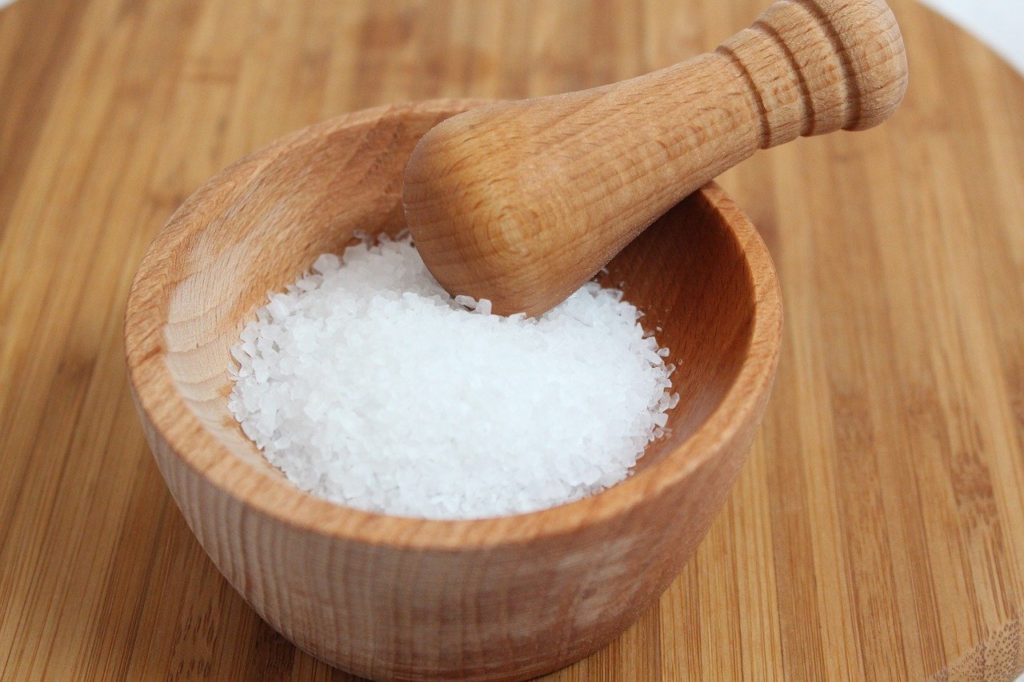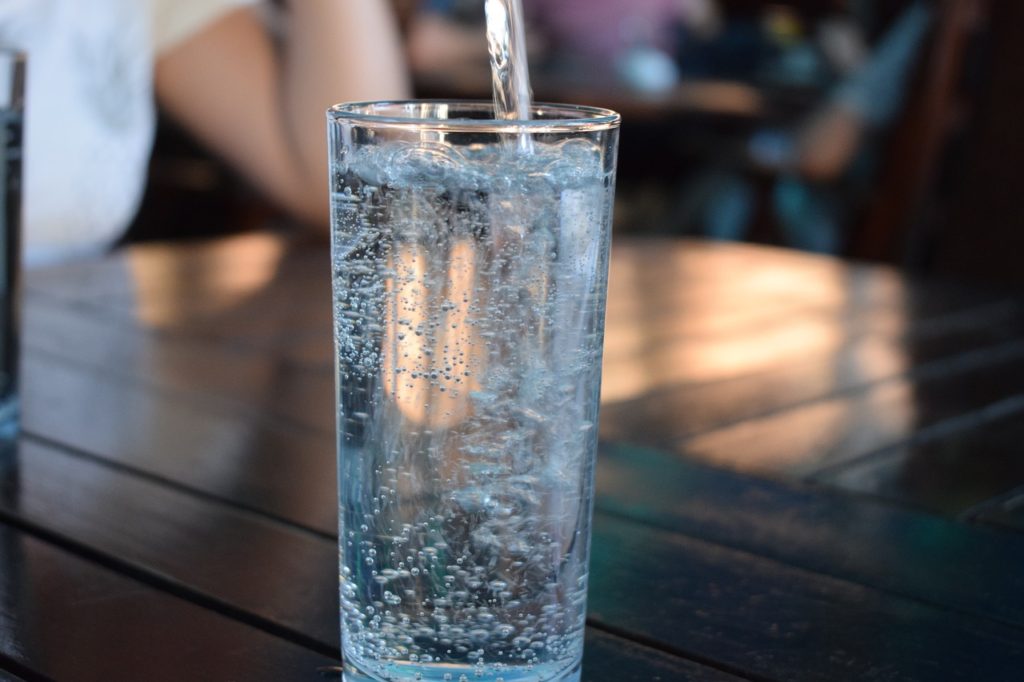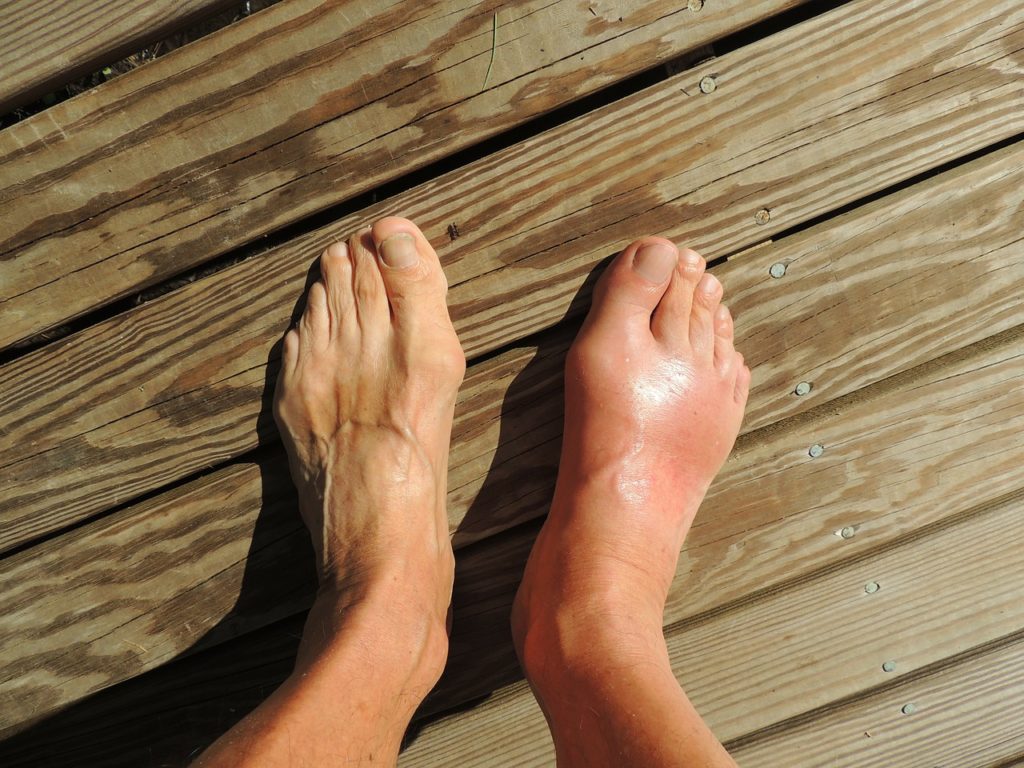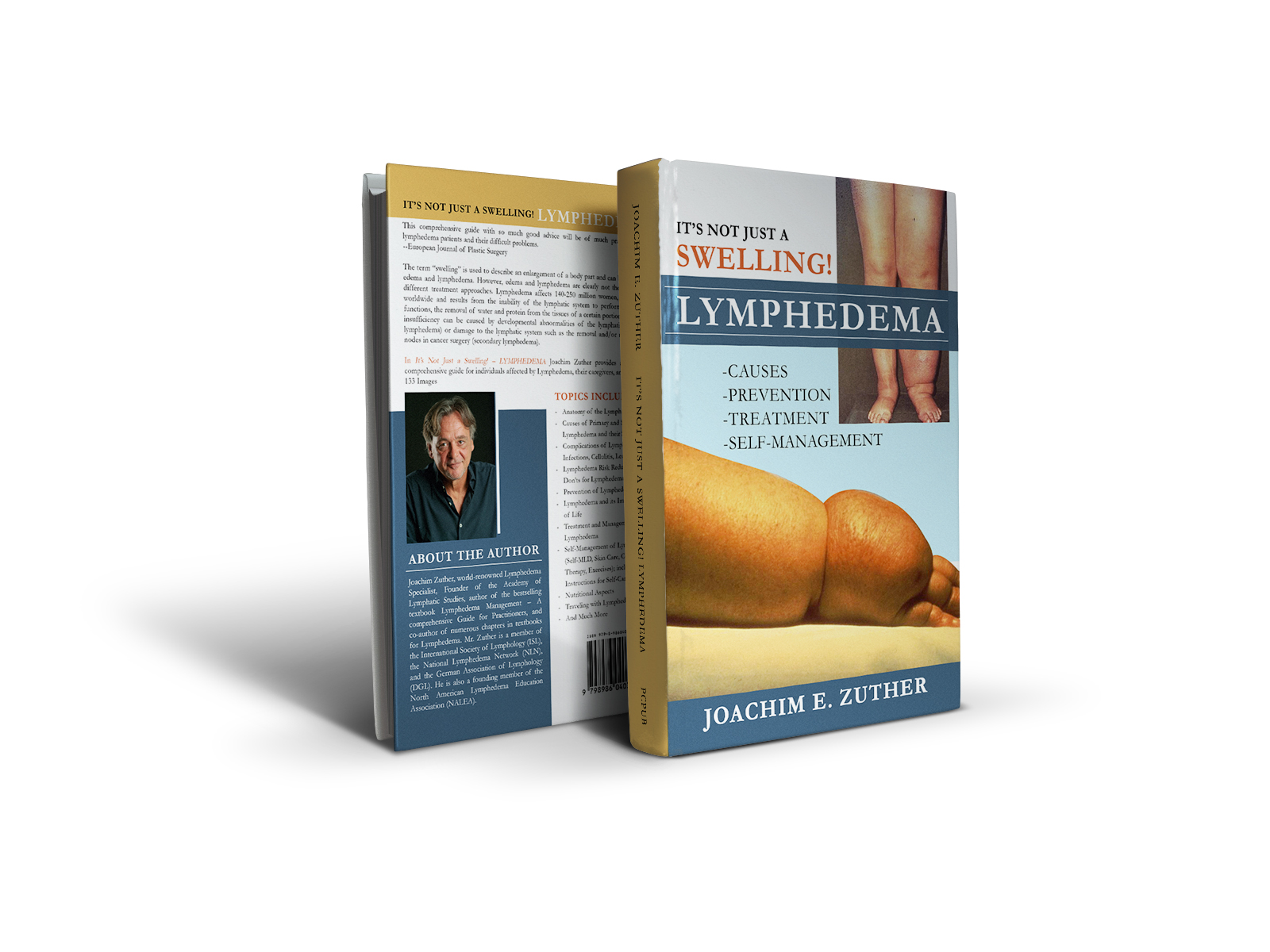By Jean LaMantia, RD
I would like to thank Jean LaMantia for contributing this interesting blog about fluid and sodium intake in relationship to lymphedema. Jean is a registered dietitian, lymph node cancer survivor and co-author of the Complete Lymphedema Management Nutrition Guide and Cookbook. She works with clients in person and virtually, is a popular public speaker and writes a well-read blog called Cancer Bites.
Fluid and Sodium for Lymphedema
 Lymphedema, like other edemas appears to benefit from a low salt diet, but when it comes to fluid intake, lymphedema sets itself apart from other edemas.
Lymphedema, like other edemas appears to benefit from a low salt diet, but when it comes to fluid intake, lymphedema sets itself apart from other edemas.
This blog will explore the relationships with fluid, sodium and lymphedema. In addition, it will cover fluid and sodium recommendations for healthy people and make suggestions for fluid and sodium targets for lymphedema.
How Much Water is in My Body?
Water is the largest single constituent in the human body and as such plays an important role in many organs and in the healthy functioning of the body.
Total body water content is highest in newborns and declines with age, as follows (1)
| Life Stage | Total Body Water as a Percentage of Body Weight |
| 0–6 months | 74% |
| 6 month–1 year | 60% |
| 1–12 years | 60% |
| Males, 12–18 years | 59% |
| Females, 12–18 years | 56% |
| Males, 19–50 years | 59% |
| Females, 19–50 years | 50% |
| Males, 51+ years | 56% |
| Females, 51+ years | 47% |
Where is the Fluid in Our Bodies?
The majority of the fluid in our bodies (70-75%) is in our fat free mass. In contrast body fat is only 10-40% water. The more body fat you have, the less water that is stored there.
Of the water in our bodies, 2/3 is in the intracellular space and 1/3 is in the extracellular space.
As you can imagine, with our adult bodies being made up of 60% water, it’s important to maintain a good fluid balance.
How Much Fluid Do I Need?
 The recommended amount of fluid to consume is set by the Food and Nutrition Board of the Institute of Health, National Academies of Sciences. This regulatory body set the Dietary References Intakes (DRIs) for vitamins, minerals and other food components including fluid and salt.
The recommended amount of fluid to consume is set by the Food and Nutrition Board of the Institute of Health, National Academies of Sciences. This regulatory body set the Dietary References Intakes (DRIs) for vitamins, minerals and other food components including fluid and salt.
The DRIs are reference values, established to plan and assess nutrient intakes of healthy people. There are 3 different types of DRIs, which include:
- Recommended Dietary Allowance (RDA)
- Levels which are sufficient to meet the needs of 97.5% of the population
- Adequate Intake (AI)
- Established when there is insufficient evidence to set the RDA
- Tolerable Upper Intake Level (UL)
- Maximum daily intake unlikely to cause adverse health effects
What is the DRI for Fluid?
Use this chart to determine the dietary reference intake for fluid for adult men and women.
| Sex/Age | AI
(Average Intake) |
UL
(Upper Level Intake) |
| Males 19+ | 3.7 L/day | No UL |
| Females 19+ | 2.7 L/day | No UL |
Reference: National Academies
There are a few things you should know about the DRI’s for fluid;
- It is based on Average Intakes of generally healthy individuals who are adequately hydrated
- You could still be hydrated at levels below these AI’s
- This number is for TOTAL WATER (including water contained in food)
- Food provides about 20% of water intake, so you could consider the free fluid requirement to be 80% of this number, i.e. 2-3L per day for females and males
- It is based on a temperate climate, and your needs may be greater in hot climates
- Drinking fluid at your meals + satisfying your thirst between meals is enough to meet your fluid needs
Is There Any Other Ways to Estimate Fluid Needs?
As a registered dietitian, I have several tools at my disposal to estimate the fluid requirements of my clients. The chart below contains some examples of the various tools.
| Method | Formula |
| Weight | 100 ml/kg for first 10kg
50 ml /kg for next 10 kg 20 ml /kg for each kg >20 kg |
| Age and weight | 16-30 years; active 40 ml/kg/day
20-55 years; 35 ml/kg/day 55-75 years; 30 ml/kg/day >75 years; 25 ml/kg/day |
| Energy | 1 ml per kcal |
| Fluid Balance | Urine output + 500 ml/day |
| Serum osmolarity | [2 x serum Na (mEql/L] +[serum glucose (mg/dl)] +[BUN (mg/dl)/2.8] |
Reference: Manual of Clinicial Dietetics, 2000
Important Considerations in Estimating Fluid Needs
The chart above lists several methods for estimating fluid needs and you can see that the first two use body weight as a basis for the calculation. But, what if you/your client is overweight or obese?
Your fluid needs are not the same for fat tissue as it is for lean body mass, so you need to account for this in your calculation. Dietitians will use their clinical judgement to determine which of these two is the preferred weight;
- Ideal body weight
- Adjusted body weight
By using your/your client’s ideal body weight may be more appropriate for a client that is older or more obese.
To calculate the adjusted body weight, you can use this calculation
Adjusted body weight = (actual body weight – ideal body weight) x 25% + ideal body weight
This calculation is saying that you need 100% of fluid for your ideal body weight but only 25% additional fluid for the additional body fat. To avoid using body fat at all, use the estimate of 1 ml of fluid for every calorie (kcal).
How Much Fluid Do I Need If I Have Edema?
 Edema, which is a build-up of fluid in the body, can have many causes. From its most benign, it can occur from sitting too long, it can also happen as a part of pregnancy or during a menstrual cycle or as a result of malnutrition.
Edema, which is a build-up of fluid in the body, can have many causes. From its most benign, it can occur from sitting too long, it can also happen as a part of pregnancy or during a menstrual cycle or as a result of malnutrition.
In its more troubling and complex situations it can be caused from the failure of the liver, kidneys, heart or blood vessels. Edema is often named after the area of the body where it occurs, for example;
- Pulmonary edema occurs in the lungs
- Peripheral edema occurs in the periphery i.e. the feet and ankles
- Cerebral edema occurs in the brain
There are also several edema conditions with unique names such as
- Liver ascites, caused from a scar tissue on the liver
- Congestive heart failure from a dysfunction of the heart valves
- Nephrotic syndrome includes swelling due to kidney damage
- Lymphedema, caused by a buildup of the lymphatic fluid from a lymph system that doesn’t work properly
In all of these edema conditions, except one, the nutrition prescription is a fluid restriction. That one condition that is the exception is lymphedema.
Why Restrict Fluid for Edema?
If you have a medical condition in which there is a build-up of fluid, then a restriction of your fluid intake is prescribed by your physician to help control your swelling.
Fluid restrictions are usually in the range of 1,000-2,000 ml per day (1-2 liters). In addition to fluid restriction, a person with one of these conditions is often prescribed a sodium (salt) restriction and diuretic mediation (medicine that increases your urine output). All of this is done to encourage the excess fluid to leave the body and prevent further build-up.
Lymphedema and Drinking Water
While there is no published research available to substantiate this, the established protocol amongst lymphedema professionals and common practice among individuals with lymphedema is no fluid restriction, in fact, fluids are typically encouraged.
Why Not Restrict Fluid for Lymphedema?
With all the excess fluid that accumulates in lymphedema you would instinctively think that reducing fluid intake would help. But, clinical practice has shown us that, this is not the case.
The reason that lymphedema is the exception is thought to be the distinct make-up of lymph fluid itself, namely, that lymph fluid is high in protein. It is understood that if you restrict fluid, you will further concentrate the protein in the extracellular space (where lymph fluid accumulates).
Protein, like sodium, chloride, bicarbonate, potassium and magnesium are all ions. An ion is a molecule with an electrical charge. Those with a + charge are called cations, and those with a – charge are called anions.
These anions and cations are contained in the intra- and extracellular space. Lymphedema fluid accumulates in the extracellular space. If you were to restrict your fluid intake the protein that was part of the lymphedema fluid in the extracellular space would become more concentrated.
The negatively charged protein would increase the osmotic pull which will draw more fluid into the extracellular space making more lymphedema. In essence, the restriction will backfire and have the opposite of the effect of what was intended
A second rationale to explain why fluid is not restricted in lymphedema comes from an understanding of dehydration and thirst. When you are dehydrated, your body will release fluid from the intracellular space into the extracellular space.
When this happens, the intracellular cells shrink in size. It is this shrinking that sends a signal to the brain that sends a message of thirst and a craving for salt (2).
If you consider this chain of events, you can see that intracellular fluid shifting to the extracellular space will add to more lymphedema.
How Much Should I Drink if I Have Lymphedema?
You have read above the DRI for fluid 3.7-4.7 L/day for healthy women and men and that fluid restriction is not recommended for lymphedema. But you may be concerned about drinking too much fluid.
In a review paper published by researchers in Wayne State University in Detroit, MI, researches describe a study in which 316 people with chronic kidney disease where coached to increase their fluid by 1-1.5L per day (3).
Animals have an inhibitory neural circuit that prevents overhydration, but humans are able to override this.
On average, the people in the study were only able to over consume by 600 ml (20 oz). This level of over- hydration was safe and did not have adverse consequences. It resulted in a matched increase in urine production.
But, it is possible to drink too much. The kidneys are able to excrete 07-1.0 L per hour. Individuals who consume more than this are risk of acute water toxicity (also called hyponatremia). There is a great deal of variations among individuals but generally the risk levels for water toxicity are about 3L per hour or 10 L per day.
Water toxicity has been documented with various medication conditions, including schizophrenia, anxiety, and syndrome of in appropriate anti-diuretic hormone secretion (SIADH).
There are also documented cases of water toxicity in healthy people who report a variety of reasons for their overconsumption of water such as kidney stones, tooth ache and to dilute ingested poison.
Given the information from above that when you feel thirst your body has already shifted fluid from the intracellular space to the extracellular (lymphedema) space, and modest over consumption of fluid of 600 ml per day is safe, it seems prudent for people with lymphedema to be advised to drink regularly and possible to even drink before they are thirsty. But if you are forcing yourself to drink to the point that it feels unpleasant or difficult, this is probably too much.
CAUTION: In addition to lymphedema if you have any issues, with your heart, kidneys or liver, or have fluid overload from causes other than lymphedema, consult your physician for an appropriate fluid recommendation.
Not only is being modestly overhydrated safe, it appears to be advantageous, as the chart based on information from the Wayne State researchers suggests;
Side Effects of Over and Underhydration
| Dehydration | Modest Overhydration
>2 L/day |
Overhydration
>3 L/day or 5-10L/d |
| Kidney stones | Prevents kidney stones | Hydronephrosis |
| Obesity | Ureter distention | |
| Recurrent urinary tract infections | Prevents urinary tract infections | Urinary bladder distention |
| Compromised cognition | Enhanced cognitive function | Encephalopathy |
| Reduced athletic performance | Modest increase in urine production | Water intoxication (hyponatremia) |
Reference (3)
In addition to fluid, another important topic for lymphedema is sodium and salt.
Salt and Lymphedema
Our bodies do require salt, but the typical N. American diet includes much more than we need. According to the National Academies, our salt requirements are as follows (4):
Recommended Intake and Upper Level for Sodium Intake
| Sex/Age | Average Intake | Upper Level Intake |
| Males
19-70 70+ |
1500 mg/day 1300 mg/day |
2300 mg |
| Females
19-50 50-70 70+ |
1500 mg/day 1300 mg/day 1200 mg/day |
2300 mg |
The amount of salt in the American (and Canadian) diet is estimated to be 3,400 mg per day. If you are eating a “typical” N. American diet, then your sodium/salt intake is above where it should be and this could be causing you to hold on to more lymph fluid and contributing to more swelling.
The Dangers of Too Much Salt
Excess salt in the diet is linked with high blood pressure (hypertension) which increases the risk of heart disease and stroke. In addition, osteoporosis, stomach cancer, kidney disease, kidney stones and generalized edema are linked to chronic excess salt intake (5).
In order to protect from these chronic disease, various health authorities have set sodium guidelines. Here are some examples from the U.S., Canada and the U.K.
Recommended Sodium intake from U.S., Canada and U.K. (6,7,8)
| Country | Recommendations |
| U.S. | <2300 mg/day
<1500 mg/day for hypertension |
| Canada | 1000-1500 mg/day
2300 mg/day Maximum |
| U.K. | <2400 mg/day |
But…I don’t Add Salt to my Food
I believe you! The amount of salt that is added to food at the table in small in comparison to the amounts that are added in processed and restaurant foods.
The most effective way to reduce your sodium is to make food from scratch and to avoid using processed foods. Another very effective way is to eat your meals at home and not at restaurants.
Tips to Reduce Sodium Intake
Other important strategies to reduce your intake of sodium include reading food labels. If eating at a restaurant check the website first, most chain restaurants post the sodium levels of their food online.
And you will be surprised, because you can’t always taste the sodium in the meal. For example, did you know that a 32 oz chocolate milk shake has more sodium that a Coney dog at A & W (9)?
Bottom Line
If you have lymphedema you can reduce your swelling by incorporating these two strategies; drink enough of water to avoid feeling thirsty and reduce your sodium intake.
In addition to this, you need to continue the work that you are doing with your certified lymphedema therapist including manual lymphatic drainage, compression, skin care and exercise. If you don’t already have a lymphedema therapist, then you can find a therapist here.
Dear Lymphedema Blog Reader – if you like the contents on this website, please help to keep it going. A great amount of work and research is necessary to provide you with up-to-date information on this site. Your donation supports these efforts and associated administrative costs. Surplus funds will be donated to Lymphedema/Lipedema-related charitable endeavors. Please donate using the “Donate Now” button on the right upper hand of this page – Thank You!
Join Lymphedema Guru, a Facebook page solely dedicated to informing about all things related to lymphedema – news, support groups, treatment centers, and much more
References
- Institute of Medicine. 2005. Dietary Reference Intakes for Water, Potassium, Sodium, Chloride, and Sulfate. Washington, DC: The National Academies Press. Page 73.
- Popkin B, D’Anci K and Rosenberg I. Water, Hydration and Health. Nutr Rev. 2010 Aug;68(8): 439-458.
- Hew-Butler T, Smith-Hale V, Pollard-McGrandy et al. Of Mice and Men- the Physiology, Psychology, and Pathology of Overhydration. Nutrients. 2019 Jul;11(7) : 1539.
- National Academies. Dietary Reference Intakes: Electrolytes and Water. 2004 https://www.ncbi.nlm.nih.gov/pmc/articles/PMC6682940/
- American Heart Association. Excess Sodium Hurts your Heart and Your Looks. Jul 30, 2014. Accessed Feb 12, 2020.
- Centers for Disease Control and Prevention. Get the Facts: Sodium and the Dietary Guidelines. Last updated Oct 2017. Accessed Feb 12, 2020.
- Health Canada. Sodium in Canada. Last updated Mar 1, 2017. Accessed, Feb 12, 2020.
- National Health Service. Salt: the facts. Last update Feb 12, 2020. Accessed Feb 12, 2020.
- A & W All American Food Nutrition Guide. 2019.


 Joachim Zuther, Lymphedema Specialist.
Joachim Zuther, Lymphedema Specialist. 
